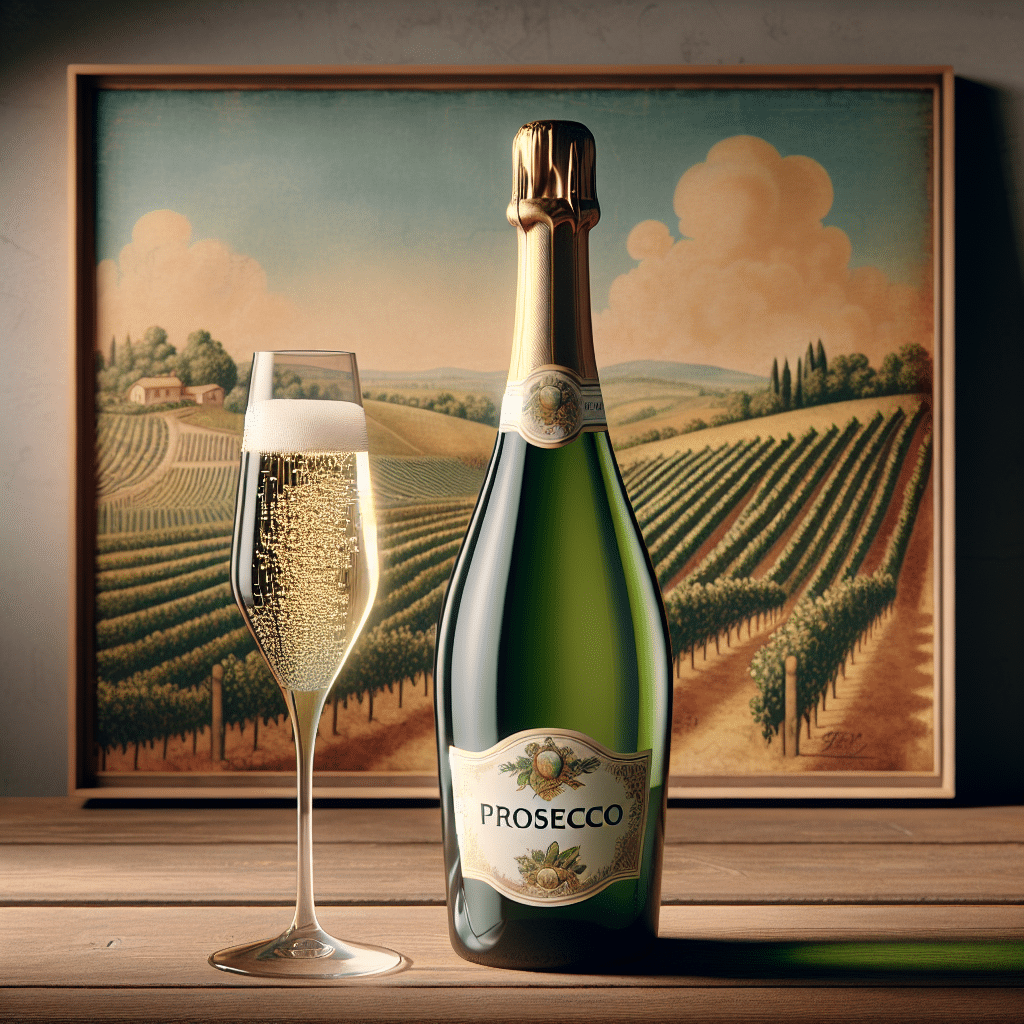What is Prosecco? Prosecco is a sparkling white wine from Italy, predominantly produced in the Veneto and Friuli Venezia Giulia regions. Made primarily from the Glera grape, Prosecco is known for its light, refreshing taste profile that often includes notes of green apple, honeysuckle, and pear. Its production method, known as the Charmat method, involves fermenting the wine in large stainless steel tanks, which preserves the wine’s fruity flavors and aromas. Originating from the Prosecco grape variety, this wine has become synonymous with celebrations, casual gatherings, and even upscale events due to its effervescence and versatility in cocktails like the Bellini. As a DOC (Denominazione di Origine Controllata) and DOCG (Denominazione di Origine Controllata e Garantita) classified wine, Prosecco sets high standards for quality and authenticity, appealing to both casual drinkers and connoisseurs alike.
Understanding Prosecco: Origins and Characteristics
When exploring Prosecco, it is vital to understand its origins, the varietals used, and the characteristics that set it apart from other sparkling wines. Prosecco’s roots trace back to a small village in the Veneto region of Italy, known as Prosecco di Conegliano-Valdobbiadene, where it was first cultivated and celebrated for its unique qualities.
Glera: The Star Grape Variety
The primary grape used in Prosecco production is Glera, which makes up at least 85% of the composition of the wine. Historically, Glera was known as Prosecco until the name change in 2009 to protect the geographical designation. In addition to Glera, winemakers can blend other grape varieties like Verdiso, Bianchetta Trevigiana, and Perera to enhance flavor complexity.
The Charmat Method: A Distinct Production Technique
Unique to Prosecco is its production method, known as the Charmat method or tank method. Unlike traditional Champagne production, where the wine undergoes secondary fermentation in the bottle, the Charmat method involves fermenting the wine in large pressurized tanks. This process allows for a quicker fermentation that retains the wine’s fragrant and fruity flavors, making Prosecco an approachable and versatile choice for many occasions.
Flavor Profiles and Styles
The flavor profile of Prosecco is typically characterized by its lightness and effervescence. Common tasting notes include:
- Fruitiness: Green apple, pear, and peach
- Floral Notes: Honeysuckle and acacia
- Citrus Hints: Lemon and lime
- Minerality: A subtle touch often derived from the region’s volcanic soils
Prosecco can come in various styles, including:
- Brut: The driest style with less than 12 grams of residual sugar per liter.
- Extra Dry: Contains between 12 to 17 grams of sugar, slightly sweeter than Brut.
- Dry: With more than 17 grams of sugar, this style appeals to those who prefer a sweeter taste.
- Frizzante: Lightly sparkling, offering a gentle effervescence.
Understanding the Regulations: DOC and DOCG
Prosecco is classified under two primary designations: DOC and DOCG. The DOC classification covers a broader area and allows for more extensive production, while DOCG represents the highest quality assurance for wines from specific regions.
DOC: Denominazione di Origine Controllata
The DOC designation applies to Prosecco produced across a wider region, ensuring that it meets essential production standards. Prosecco DOC regulations require the grapes to be sourced from designated vineyards and follow specific methods for desirable quality results.
DOCG: Denominazione di Origine Controllata e Garantita
Prosecco DOCG is a premium category, indicating wines produced in limited areas, specifically Conegliano Valdobbiadene and Asolo. Wines under this classification are subject to stricter production standards, including yield limitations and tasting evaluations, guaranteeing the utmost quality. Examples of DOCG Prosecco include Prosecco Superiore and Prosecco di Conegliano Valdobbiadene.
Prosecco in the U.S. Market
Prosecco has experienced a significant growth trajectory in the U.S. market, surpassing Champagne in popularity in recent years. Several factors contribute to this phenomenon, including Prosecco’s approachable flavor, affordability, and versatile pairing with various cuisines. According to the Wine Market Council, Prosecco faces a consumer base that increasingly seeks enjoyable and flavorful sparkling wines at accessible price points.
Pairing Prosecco with Food
Whether you are hosting a casual gathering or planning an elegant dinner party, Prosecco is a versatile pairing partner. Its vibrant acidity and fruit-driven profile complement an array of dishes:
- Appetizers: Antipasti, cheese platters, and seafood dishes
- Main Courses: Grilled chicken, risotto, and dishes with citrus elements
- Desserts: Light pastries, fruit tarts, and sorbets
Exploring Prosecco Cocktails
Prosecco acts as an excellent base for various cocktails, allowing creative mixes that highlight its refreshing character. Some popular Prosecco cocktails include:
- Bellini: A blend of Prosecco and peach puree, this classic cocktail adds a fruity twist to any occasion.
- Aperol Spritz: Combining Prosecco, Aperol, and soda water, this vibrant drink is perfect for warm weather gatherings.
- Mimosa: Mixing Prosecco with fresh orange juice, Mimosas are a brunch staple.
Conclusion: The Allure of Prosecco
In summary, Prosecco embodies a unique fusion of tradition and innovation, bringing quality, effervescence, and approachability to the world of sparkling wines. Its distinctive production methods, coupled with stringent quality classifications, create a delightful beverage that has captivated the palate of wine enthusiasts and casual drinkers alike. As Prosecco continues to grow in popularity, it remains a symbol of celebration, making it a must-try for anyone who enjoys a refreshing glass of sparkling wine.
FAQs about Prosecco
1. What is the difference between Prosecco and Champagne?
The primary difference lies in the production methods and regions of origin. While Prosecco is produced primarily in Italy using the Charmat method, Champagne is made in France via the traditional méthode champenoise, which involves bottle fermentation. This gives Champagne a different flavor profile and texture compared to Prosecco.
2. Is Prosecco sweet or dry?
Prosecco can range from dry to medium-sweet, depending on its classification. The Brut style is the driest, while Extra Dry and Dry options display varying degrees of sweetness, with Dry being the sweetest of the typical classifications.
3. How should I serve Prosecco?
Prosecco is best served chilled, ideally at temperatures between 45-50°F (7-10°C). Using flutes is recommended to maintain the effervescence, and it can be enjoyed on its own or combined into various cocktails.
4. Can Prosecco be aged?
Typically, Prosecco is meant to be consumed young, within a year or two of its release. Aging is not a common practice as the wine’s fresh, fruity characteristics tend to fade over time.
5. What does “superiore” mean on a Prosecco label?
When you see “Superiore” on a Prosecco label, it indicates that the wine is of DOCG quality and has been produced within the Conegliano Valdobbiadene area, known for its superior grapes and rigorous production standards.



